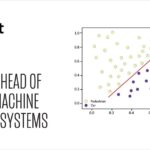Over 91% of finance leaders recognize key R2R tasks as suitable for automation, but only 58% of them have automated at least one key process. This is the standout statistic we uncovered in “The R2R automation playbook,” a recent survey by SSON Research & Analytics commissioned by Redwood Software.
A clear indication of the challenges finance leaders face, this finding highlights considerable barriers to the full adoption of R2R automation. Given the importance of automating R2R in the accounting cycle, it’s essential to overcome these challenges and deliver operational efficiency and better financial close management.
During my career in finance, I was fortunate to work with some of the leading ERPs, accounting software and finance systems. As I moved from day-to-day finance work to finance transformation strategy, I evaluated and implemented some of the best R2R automation tools and platforms. Through the lens of my experience, I will unpack the findings of this research, outlining the real issues highlighted by finance leaders and how to overcome them to achieve meaningful, scalable finance transformation.
With this knowledge, you can choose not to be among the 33% of finance leaders who are aware of the opportunity for R2R automation but have not implemented it.
What is preventing the widespread adoption of R2R automation?
“Too often, automation is underutilized—companies automate small, repeatable tasks but fail to scale automation across interconnected finance workflows. This results in diminished ROI and a perception that automation isn’t delivering its full promise.“
— The R2R automation playbook
Before discussing how to transform your R2R operations, it’s worth considering what could be holding your team back from committing to automation. The research found that finance leaders called out six barriers preventing the expansion of R2R automation in their organizations.
- Lack of integration with legacy systems: Automation tools that lack integration rely on data being duplicated and stored outside your ERP system, which creates additional work for Finance to refresh and reconcile multiple sets of data. That’s a considerable burden during the monthly close, when account balances and financial data frequently change in the general ledger due to adjustments, corrections, accruals, provisions and reclassifications.
- Limited knowledge about automation potential: A lack of knowledge about the capabilities of automation tools and how they apply to finance tasks prevents further progress. Without knowledge of the “art of the possible,” finance leaders struggle to identify finance tasks they can automate. For tasks they recognize as candidates for automation, a lack of knowledge of the capabilities of the automation tools prevents a clear understanding of how to deliver automation.
- Technical complexity: Complex automation tools require technical experts to configure and operate the technology, which moves the definition and control of automating processes away from finance users. Reliance on technical experts to make simple changes to automation rules and add new automated process steps inevitably prevents progress toward a fully automated finance operation.
- High implementation costs: Many see the cost of implementing automation tools as a reason for not achieving more with them. High implementation costs can result from a technically complex automation tool that requires expensive technical expertise to deliver and maintain automation. They can also indicate expensive software license costs or the scale of the infrastructure required to run the solution.
- Making the business case: A business case that delivers R2R automation using technically complex automation solutions with high implementation costs, coupled with a lack of understanding or strategic vision of the automation journey, will lead to a fragile business case. A weak business case with an inadequate ROI compromises further investment to deploy the automation more broadly.
- Resistance from staff: Most of us don’t like surprises or change, and if automating R2R accounting processes meets resistance among finance teams, they often choose to continue using current time-consuming methods and ways of working, typically with spreadsheets, ensuring the organization cannot realize the targeted benefits of automation. Thus, error-prone manual financial activities and processes will prevail.
The barriers preventing wide-scale adoption of R2R automation mirror those that often arise in other technology-led business transformation initiatives. However, in the case of R2R automation, the issues are exacerbated because the technologies typically deployed are point solutions that focus on automating one thing, such as reconciliations, intercompany or journal entries. Point solutions dictate a tactical style of implementation that does not consider the big picture — the opposite of a strategic approach that’s more likely to succeed in delivering the targeted benefits and organization-wide adoption.
Only 13% of finance leaders are “very satisfied” with the ROI of their automation.
88% of organizations are “moderately satisfied,” or worse, with their R2R automation ROI.
Source: The R2R automation playbook
The ingredients of an effective R2R automation strategy
The most meaningful change required to move past the barriers holding R2R automation back is to elevate the focus away from niche areas and point solutions to a broader and more strategic outlook. Automating journal entries or reconciliations can yield some business benefits, but this approach creates an island of automation surrounded by the same manual working methods.
Key takeaways for finance leaders
- R2R automation must shift from tactical to strategic
- There is unrealized ROI of automation
- Automation cannot succeed without integration
- Leadership buy-in is the missing piece
Here are the steps you need to take to ensure wider adoption of R2R automation in your organization.
Step 1: Take stock of where you are on your automation journey
Before embarking on any journey, it’s essential to understand your starting point. Conducting a detailed assessment of your current automated and manual processes will enable you to develop a strategy and plan for automation that goes beyond a single-task focus, an approach that point automation solutions tend to promote because of their adoption.
This assessment will provide valuable insight and input into the subsequent steps toward an integrated approach to automating your R2R processes.
Step 2: Build a compelling business case
Any technology-led finance transformation investment must be backed by a strong business case and meaningful ROI. You should undertake due diligence to understand what is achievable with an integrated and modern R2R automation solution and validate the benefits and opportunities for your organization. During this investigation, you will gain valuable knowledge from software providers and other organizations that have embarked on similar journeys, plugging some gaps in your “art-of-the-possible” thinking process.
Strong leadership support remains limited, indicating a need for more robust business cases and strategic alignment to drive automation investments.
- Only 33.33% have strong executive support for automation expansion.
- 36.84% say leadership is interested but needs further justification.”
— The R2R automation playbook
Understanding the CFO’s priorities and aligning the business case for automation with them will help secure the required funding. It will also ensure the executive sponsorship and leadership needed for effective organizational change are in place once the project commences.
Step 3: Choose an R2R automation platform that integrates with your ERP and other systems
Selecting an automation platform that integrates with your ERP and other systems enables you to expand the benefits of automation beyond niche areas of finance activities. Integrated R2R automation platforms combine the best capabilities of the many automation point solutions available in the market, like journal entries, month-end close checklist, intercompany and reconciliations, with an end-to-end approach to control and monitor your processes. Automating these “first-mile” finance activities in a single integrated platform ensures that the financial close becomes a non-event, too.
Choosing an integrated R2R automation solution eliminates the interoperability issues between disparate point solutions while simplifying the implementation, maintenance and upgrade of the automation software — because it is a single platform from one vendor.
Discover how a global manufacturing services company achieved four major benefits by automating and digitizing manual tasks across its R2R and month-end close process.
Step 4: Develop and execute a comprehensive automation strategy to digitally transform finance
Delivering the ROI you need is essential, and a more strategic approach to R2R automation allows you to redefine how your finance function operates. Operational efficiency through automation is the foundation for many other benefits beyond cost savings. It’s also about the speed and agility with which processes execute, the scalability to accommodate an increasing workload without needing to employ more staff and the reduced risk and stronger compliance the automated R2R process brings.
“The real opportunity lies in adaptable automation adoption — whether companies choose a gradual (crawl, walk, run) approach or a full-scale transformation, success depends on an integrated, scalable automation strategy. The key is to build automation capabilities progressively while ensuring they remain connected to the broader finance transformation vision.”
— The R2R automation playbook
Beyond operational efficiency, you will create a continuous improvement approach and culture if you deliver R2R automation with the right automation platform and a strategic approach aligned with your CFO’s priorities.
Learn more about the gap between automation perception and reality in finance and how your peers in finance are transforming their financial close performance. Read the full report here.


























